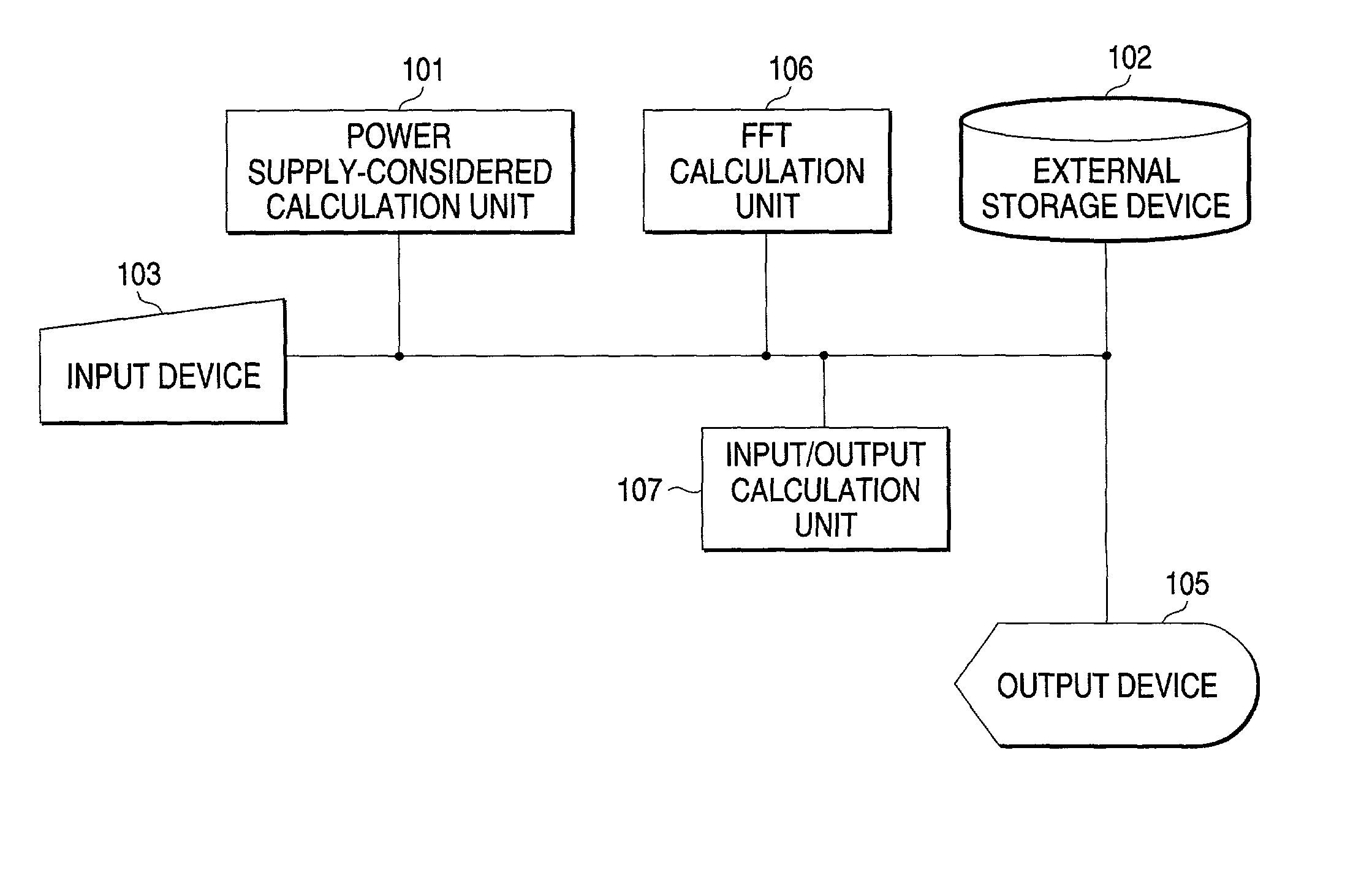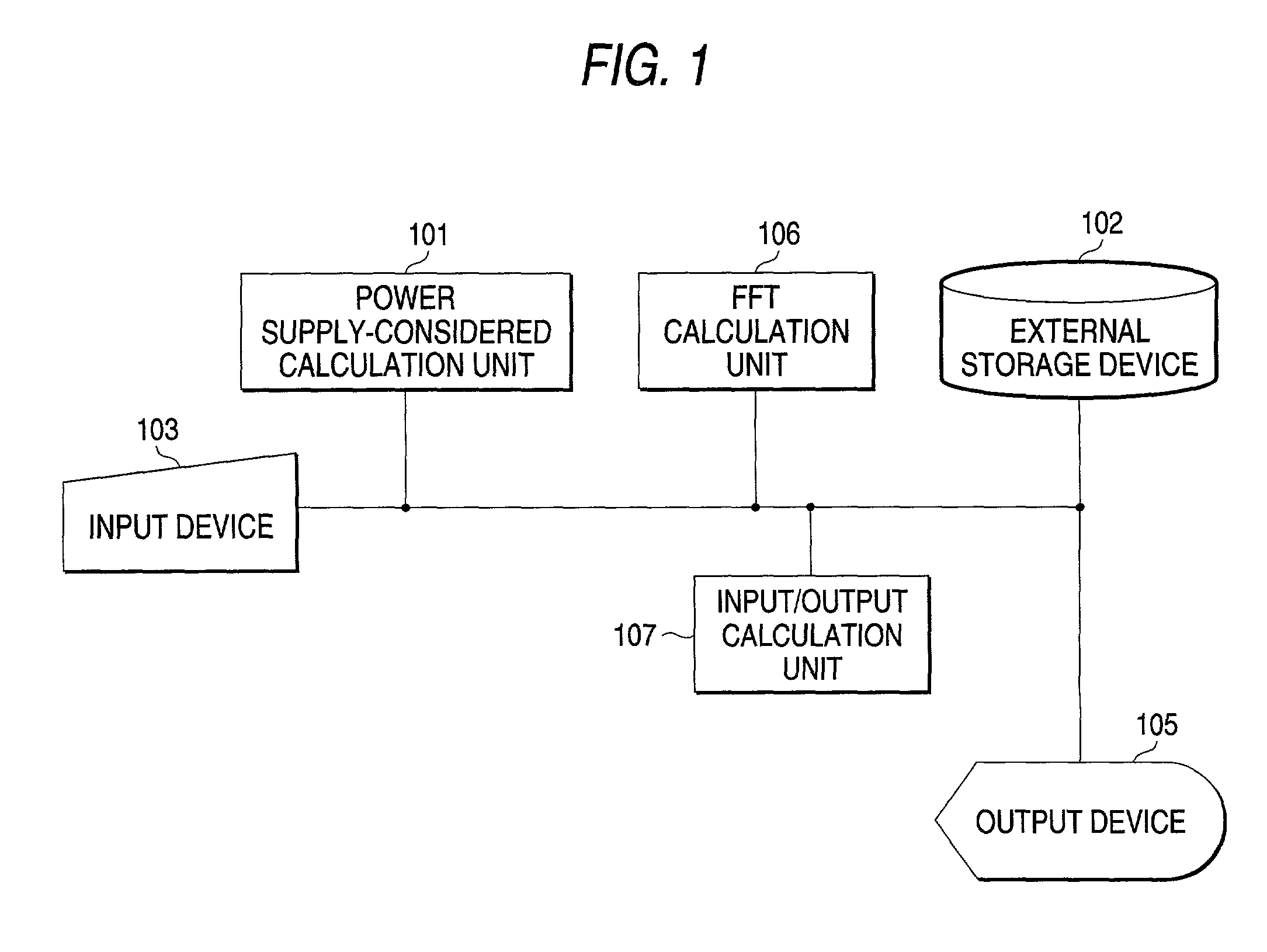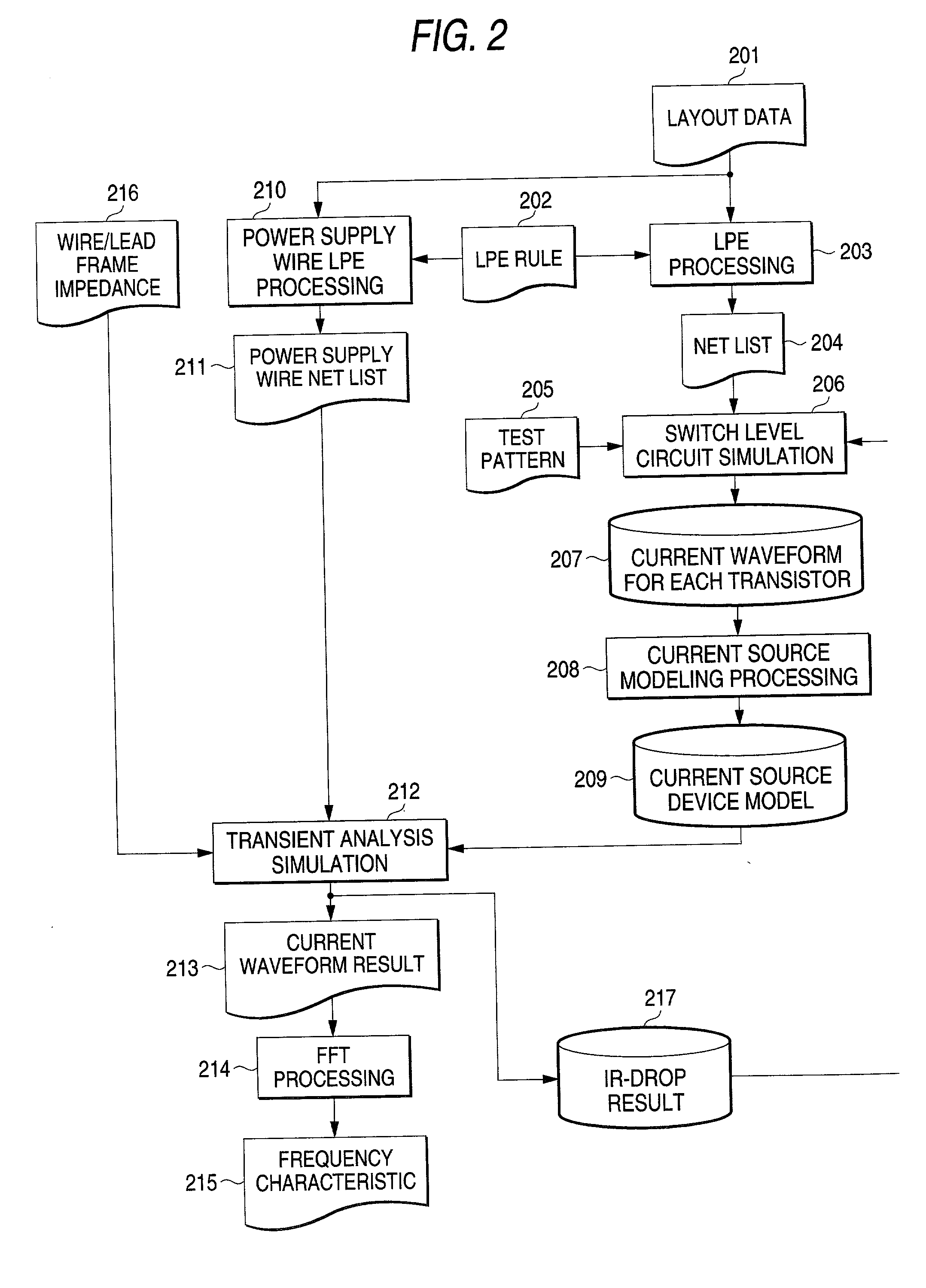Electromagnetic interference analysis method and apparatus
a technology of electromagnetic interference and analysis method, applied in the field of electromagnetic interference analysis method, can solve the problems of erroneous operation, difficult implementation of such measures, and interference of electromagnetic waves in television and radio receivers
- Summary
- Abstract
- Description
- Claims
- Application Information
AI Technical Summary
Problems solved by technology
Method used
Image
Examples
first embodiment
[0308] (First Embodiment)
[0309] In the conventional EMI analysis of LSI, the current change that was analyzed by the power supply current transient analysis tool on transistor level is FFT-analyzed. However, because the analysis width of FFT is uniform, a problem arises that more memory is needed to store information and the analysis takes more time.
[0310] To cope with this problem, this embodiment is characterized by a frequency analysis technique in which a frequency analysis result prepared in advance and expected to have a peak is analyzed in detail and other portions of the analysis result are analyzed coarsely.
[0311] FIG. 6 shows a configuration of the EMI analysis method according to one embodiment of this invention. The EMI analysis method in the figure has a detailed frequency storage means 601, a power supply current information storage means 602, an FFT analysis means 603, and an FFT result storage means 604. Of these, the detailed frequency storage means 601, the power s...
second embodiment
[0330] (Second Embodiment)
[0331] The conventional EMI analysis of LSI is performed by FFT-analyzing the current change that was obtained by using the transient analysis tool for the transistor level power supply current. The conventional method has a problem that because the current change information is stored temporarily in a buffer, a larger amount of memory is needed for storing that information and the analysis takes longer.
[0332] To solve this problem this embodiment uses a technique of performing the frequency analysis along with the current calculation.
[0333] FIG. 11 shows a configuration of a device used for the EMI analysis method according to one embodiment of this invention. This EMI analysis apparatus has a netlist storage means 1101, a test vector storage means 1102, a current FFT analysis means 1103, and an FFT result storage means 1104.
[0334] Of these means, the netlist storage means 1101, the test vector storage means 1102 and the FFT result storage means 1104 are a...
third embodiment
[0357] (Third Embodiment)
[0358] The conventional EMI analysis method for LSI is done by FFT-analyzing the current changes that were obtained at one time for the entire analysis time span by using the transistor level power supply current transient analysis tool. This method has a problem that because the current change information is stored temporarily in the buffer, a memory for storing the information is needed.
[0359] To solve this problem this embodiment adopts a technique that performs the frequency analysis along with the current calculation for each predetermined time interval.
[0360] FIG. 16 shows a configuration of a device used for the EMI analysis method according to one embodiment of this invention.
[0361] The EMI analysis apparatus shown comprises a netlist storage means 1601, a test vector storage means 1602, a current FFT analysis means 1603, an FFT result storage means 1604, and a power supply current storage means 1605.
[0362] Of these, the netlist storage means 1601, t...
PUM
 Login to View More
Login to View More Abstract
Description
Claims
Application Information
 Login to View More
Login to View More - R&D
- Intellectual Property
- Life Sciences
- Materials
- Tech Scout
- Unparalleled Data Quality
- Higher Quality Content
- 60% Fewer Hallucinations
Browse by: Latest US Patents, China's latest patents, Technical Efficacy Thesaurus, Application Domain, Technology Topic, Popular Technical Reports.
© 2025 PatSnap. All rights reserved.Legal|Privacy policy|Modern Slavery Act Transparency Statement|Sitemap|About US| Contact US: help@patsnap.com



